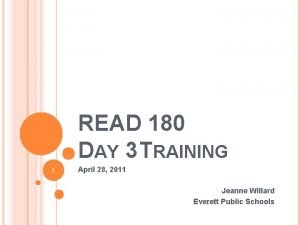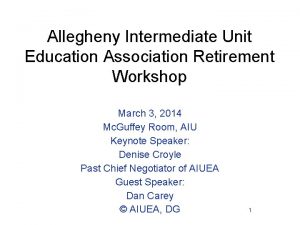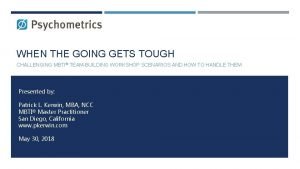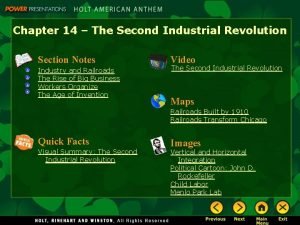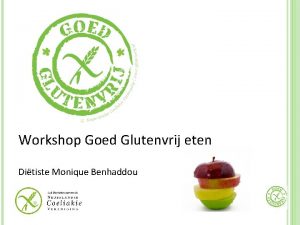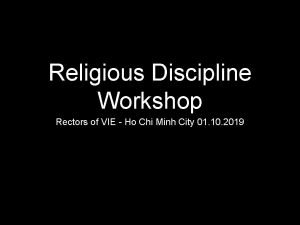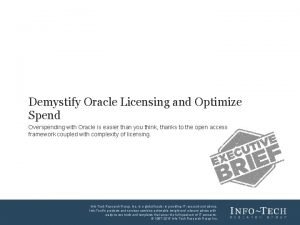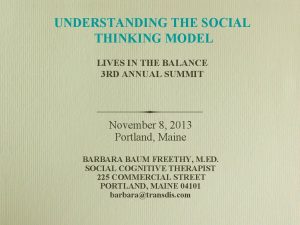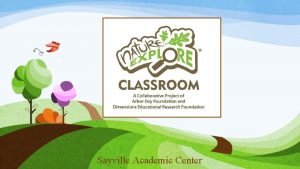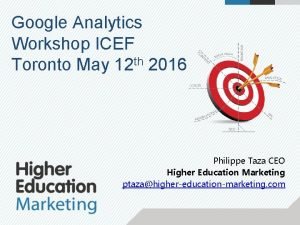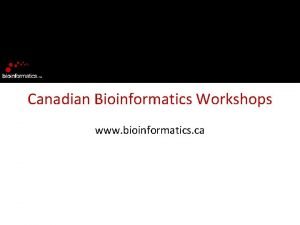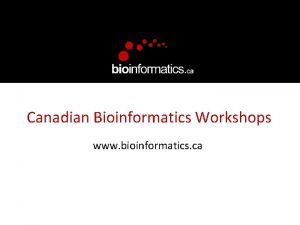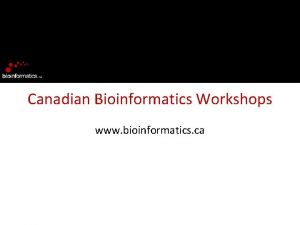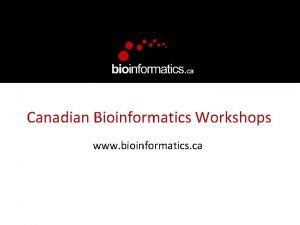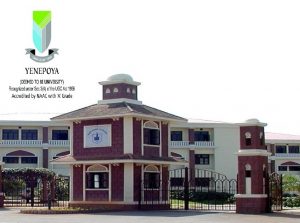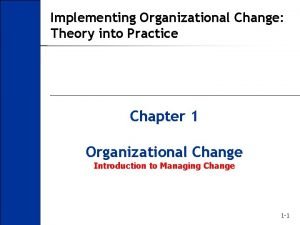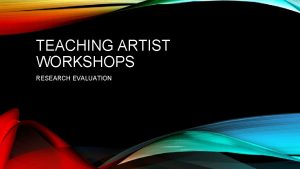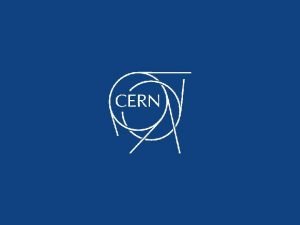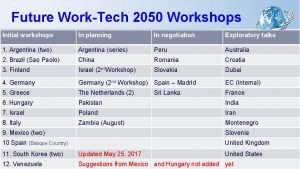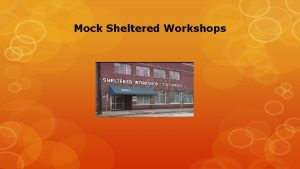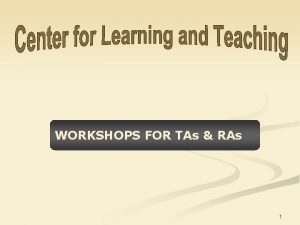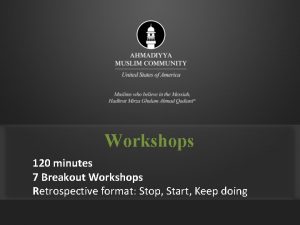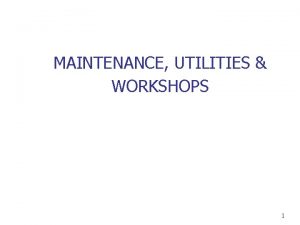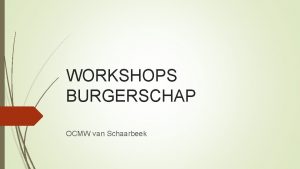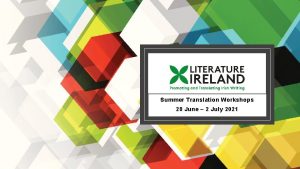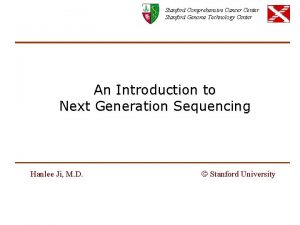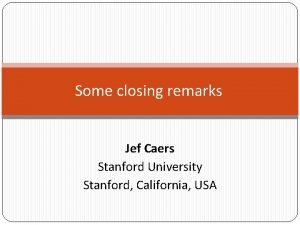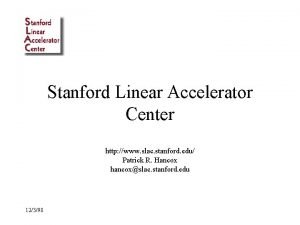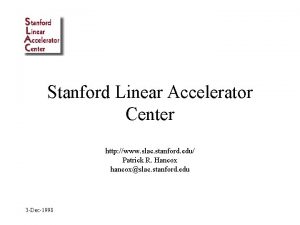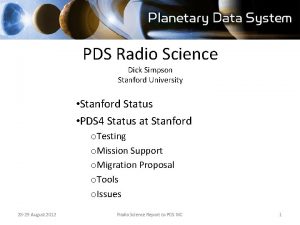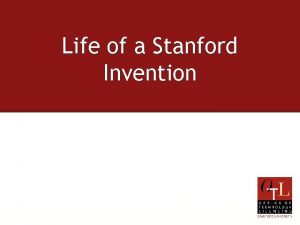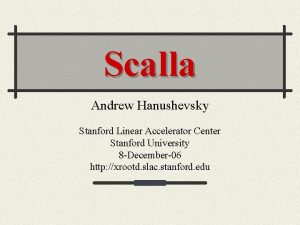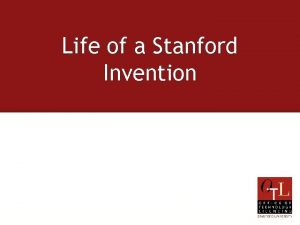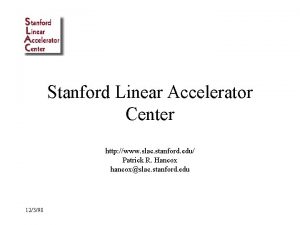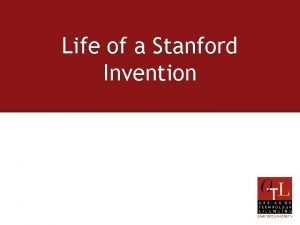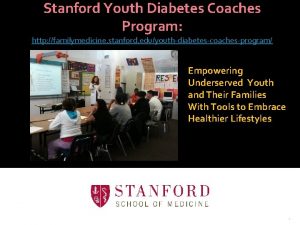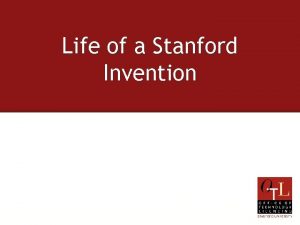DESIGNING AND IMPLEMENTING SCIENTIFIC TEACHING WORKSHOPS FOR STANFORD






































- Slides: 38

DESIGNING AND IMPLEMENTING SCIENTIFIC TEACHING WORKSHOPS FOR STANFORD POSTDOCS LAWRENCE URICCHIO WHITNEY HEAVNER

WHAT DO YOU THINK OF WHEN YOU HEAR THE WORD POSTDOC? https: //postdocs. stanford. edu/prospective-postdocs

HOW ABOUT PROFESSOR? https: //www. stanford. edu/faculty-staff-gateway/

POSTDOC “VS” PROFESSOR Postdoc Professor Research Job applications Teaching Purgatory Lab/grant administration Dream job

QUESTIONS WE WILL ADDRESS (IN PART) • What is the point of a postdoc and how can we improve the efficacy of the postdoc? • How can scientific teaching benefit postdocs and future faculty? • What types of scientific teaching approaches can postdocs employ to improve their teaching? • What teaching opportunities & resources are available at Stanford and beyond?

WHAT EXPLAINS THE STRUCTURE OF POSTDOCTORAL “TRAINING”? Hypothesis 1 Hypothesis 2 Hypothesis 3 “It’s in the best interests of the postdoc” “It’s in the best interests of science” “It’s at the whims of external economic factors”

WHAT EXPLAINS THE STRUCTURE OF POSTDOCTORAL “TRAINING”? Hypothesis 1 Hypothesis 2 Hypothesis 3 “It’s in the best interests of the postdoc” “It’s in the best interests of science” “It’s at the whims of external economic factors” Cryanoski et al 2011, Nature

SHOULD WE RECONSIDER THE CURRENT TRAINING MODEL FOR POSTDOCS? Potential benefits of postdocs training in teaching: • Increased effectiveness as junior faculty • Increased competitiveness on job market (potentially) • Decreased time burden as junior faculty • Increase in classroom inclusivity Potential detriments: • Decreased research efficiency (costly on job market) • Loss of student-faculty interaction time

WHAT IS SCIENTIFIC TEACHING? “Scientific teaching involves active learning strategies to engage students in the scientific process and teaching methods that have been tested and systematically shown to reach diverse students. ” Handelsman et al, Science 2004

WHAT IS SCIENTIFIC TEACHING? “Scientific teaching involves active learning strategies to engage students in the scientific process and teaching methods that have been tested and systematically shown to reach diverse students. ” Handelsman et al, Science 2004 • Active learning & classroom engagement • Quantitative approaches in the classroom • Assessment of students and teaching efficacy • Inclusion in the classroom

IF WE’RE GOING TO TRAIN POSTDOCS IN SCIENTIFIC TEACHING, HOW SHOULD WE DO IT? Identify & invite faculty active in scientific teaching Run a series of teaching workshops led by faculty invitees Run a follow-up postdoc-led reading group

IF WE’RE GOING TO TRAIN POSTDOCS IN SCIENTIFIC TEACHING, HOW SHOULD WE DO IT? ✓ Identify & invite faculty active in scientific teaching ✓ Run a series of teaching workshops led by faculty invitees ✗ Run a follow-up postdoc-led reading group

A POSTDOC TEACHING MINISERIES Katie Wilkinson SJSU Active Learning Eliot Bush Harvey Mudd Computational/ quantitative biology Jeff Schinske Foothill/De Anza Inclusion Sarah Bissonnette CSU-Stanislaus Assessment

WHY USE A SCIENTIFIC & ACTIVE APPROACH TO TEACHING? Freeman et al 2014 PNAS

Slide by Katie Wilkinson What is the Evidence Active Learning is Better than Lecture Only? Students 1. 5 x more likely to fail in lecture only classes Grades improved by ~6% in active learning classes Active learning increases scores on concept inventories more than course exams Active learning is effective in all class sizes, but greatest effects seen in small classes (<50) Scott Freeman et al. PNAS 2014; 111: 84108415 © 2014 by National Academy of Sciences

ACTIVE LEARNING: THE IDEAL Slide by Katie Wilkinson Photo credit: University of Minnesota; https: //cei. umn. edu/support-services/tutorials/active-learning-classrooms

Slide by Katie Wilkinson ACTIVE LEARNING IN THE REAL WORLD Introductory Biology, 460 students No desks, balcony, poor lighting-especially in the back

ACTIVE LEARNING STRATEGIES Clickers—engage students in problem solving and incentivize participation • SJSU has a site license for Reef Polling/i. Clicker that can be used with any wifi enabled device. Hand-held clickers available for students to borrow for free • Many other clicker software options; some have free accounts for small number of students (Poll Everywhere, Top Hat) Slide by Katie Wilkinson

WHAT SHOULD YOU DO IF YOU GOT THIS RESPONSE TO A Slide by Katie Wilkinson CLICKER QUESTION?

USE PEER DISCUSSION TO MAXIMIZE IMPACT OF CLICKER QUESTIONS Slide by Katie Wilkinson Peer discussion improves performance on re-vote of same question (Q 1 ad) as well as individual performance of a similar question asked later Smith, Michelle K. , et al. "Why peer discussion improves student performance on in-class concept questions. " Science 323. 5910 (2009): 122 -124.

WHAT TYPES OF TOOLS SHOULD WE BE AWARE OF? There are numerous ways to make even large classes more interactive • Think-pair-share • Just-in-time teaching methods • Flipped classroom • POGIL (process oriented guided inquiry learning) • PLTL (peer led team learning)

ASSESSMENT Slide by Sarah Bissonnette

ASSESSMENT Slide by Sarah Bissonnette

ASSESSMENT Slide byby Sarah Bissonnette Slide Sarah Bissonnette

Slide by Sarah Bissonnette ASSESSMENT

Slide by Sarah Bissonnette

QUANTITATIVE BIOLOGY


QUANTITATIVELY ASSESSING OUR OWN TEACHING Dodds, Libeskind-Hadas, & Bush 2012

DIVERSITY & INCLUSION • Students of different backgrounds can experience the learning environment very differently • Negative stereotypes can affect student performance even if these stereotypes are not explicitly or implicitly endorsed by instructors or peers Steele & Aronson, 1995

WHY DON’T STUDENTS HAVE AN INCLUSIVE VIEW OF SCIENTISTS? Credit to Jeff Schinske for this idea

INCLUSION & DIVERSITY IN THE CLASSROOM Emphasizing personal stories and accomplishments of diverse scientists can help create a more inclusive view of scientists Schinske et al 2016 CBE Life sciences education

STANFORD TEACHING OPPORTUNITIES FOR POSTDOCS-1

STANFORD TEACHING OPPORTUNITIES FOR POSTDOCS-2

STANFORD TEACHING OPPORTUNITIES FOR POSTDOCS-3 Postdocs can also… • Join the postdoc pedagogy journal club to present or participate • Teach at community colleges or teaching colleges (opportunities often shared on the postdoc teaching listserv) • Enroll in the • Contact VPTL for course offerings • Apply for IRACDA (if continued)

Slide by Katie Wilkinson REDESIGN OF INTRODUCTORY BIOLOGY AT SJSU More Active Learning—clicker questions, online reading prequizzes Adoption of a New Textbook—inexpensive, online only textbook ($70); aligned with Vision & Change recommendations, emphasizes experimental design; http: //www. trunity. com/trubookintegrating-concepts-in-biology-by-campbell-heyer-paradise. html Emphasize SJSU Research—clicker questions based on SJSU research projects to emphasize dynamic nature & introduce to research; highlight diverse scientists More Inquiry-Based Labs—eliminate the cookbook labs Use of Peer Mentors—homework session, teach students about college http: //www. sjsu. edu/biology/assessment/introductory-coreredesign/index. html Supported by CSUPERB Curriculum Redesign Grant

TAKE-AWAY MESSAGES • In a perfect world, postdocs should devote a greater portion of their effort to teaching/training in evidence-based approaches • Evidence-based active learning can improve student outcomes • Active learning can be effectively applied even in large classes • Developing assessments in tandem with course objectives can make assessments more effective • Active & evidence-based approaches have the potential to reduce achievement gaps and improve learning environments

ACKNOWLEDGEMENTS • Whitney Heavner • Christine Solari & TMA • Gloriana Trujillo • Sarah Bissonnette • Katie Wilkinson • Eliot Bush • Jeff Schinske • Robin Sugiara • Sophie Kleppner • John Boothroyd • Susan Mc. Connell
 Designing and implementing brand architecture strategies
Designing and implementing brand architecture strategies Brand hierarchy levels
Brand hierarchy levels Fighter brand strategy
Fighter brand strategy Lexile levels by grade 2021
Lexile levels by grade 2021 Psea retirement calculator
Psea retirement calculator Mbti activities for small groups
Mbti activities for small groups Cramped workshops set up in shabby tenement buildings
Cramped workshops set up in shabby tenement buildings Glutenstapeling
Glutenstapeling Workshops for rectors
Workshops for rectors Oracle licensing workshops
Oracle licensing workshops Social thinking workshops
Social thinking workshops Sayville academic center
Sayville academic center Google analytics workshop toronto
Google analytics workshop toronto Canadian bioinformatics workshops
Canadian bioinformatics workshops Canadian bioinformatics workshops
Canadian bioinformatics workshops Canadian bioinformatics workshops
Canadian bioinformatics workshops Canadian bioinformatics workshops
Canadian bioinformatics workshops Five disadvantages of micro teaching
Five disadvantages of micro teaching Differences between micro teaching and traditional teaching
Differences between micro teaching and traditional teaching Information gathered during an experiment
Information gathered during an experiment How is a scientific law different from a scientific theory?
How is a scientific law different from a scientific theory? Management issues central to strategy implementation
Management issues central to strategy implementation Implement strategies management issues
Implement strategies management issues Chapter 7 strategic management
Chapter 7 strategic management Setting prices and implementing revenue management
Setting prices and implementing revenue management Crm vision statement examples
Crm vision statement examples Implementing strategies management and operations issues
Implementing strategies management and operations issues Implementing strategies management and operations issues
Implementing strategies management and operations issues Hrd program implementation
Hrd program implementation Retail management notes doc
Retail management notes doc Porfolio assessment
Porfolio assessment Qsen teamwork and collaboration examples
Qsen teamwork and collaboration examples Challenges of implementing predictive analytics
Challenges of implementing predictive analytics Bert spector
Bert spector Finance and accounting issues in strategy implementation
Finance and accounting issues in strategy implementation Is the traditional method of implementing access control
Is the traditional method of implementing access control Simplified scoring model in project management
Simplified scoring model in project management Implementing nfpa 1600 national preparedness standard
Implementing nfpa 1600 national preparedness standard Implementing organizational change theory into practice
Implementing organizational change theory into practice



